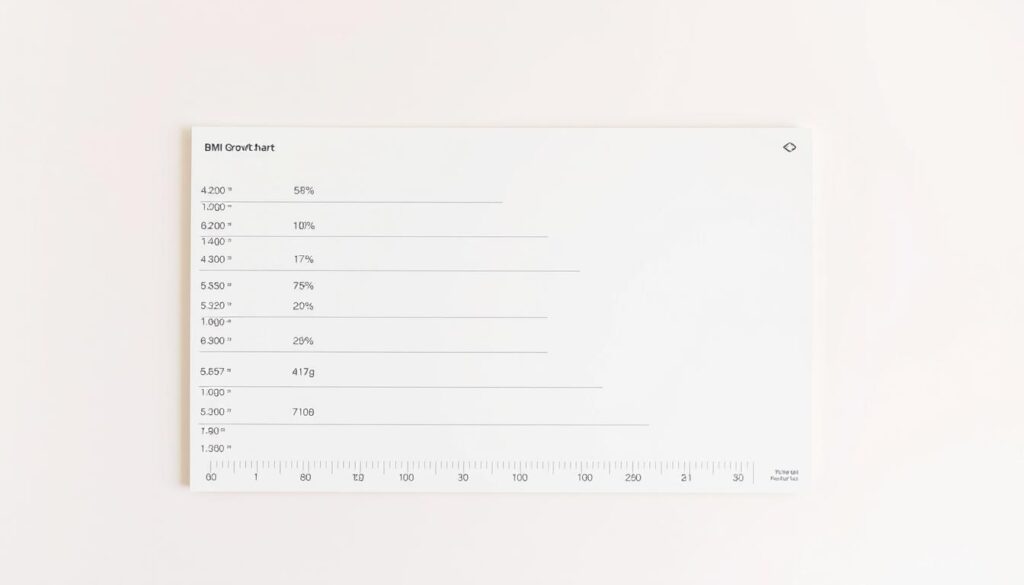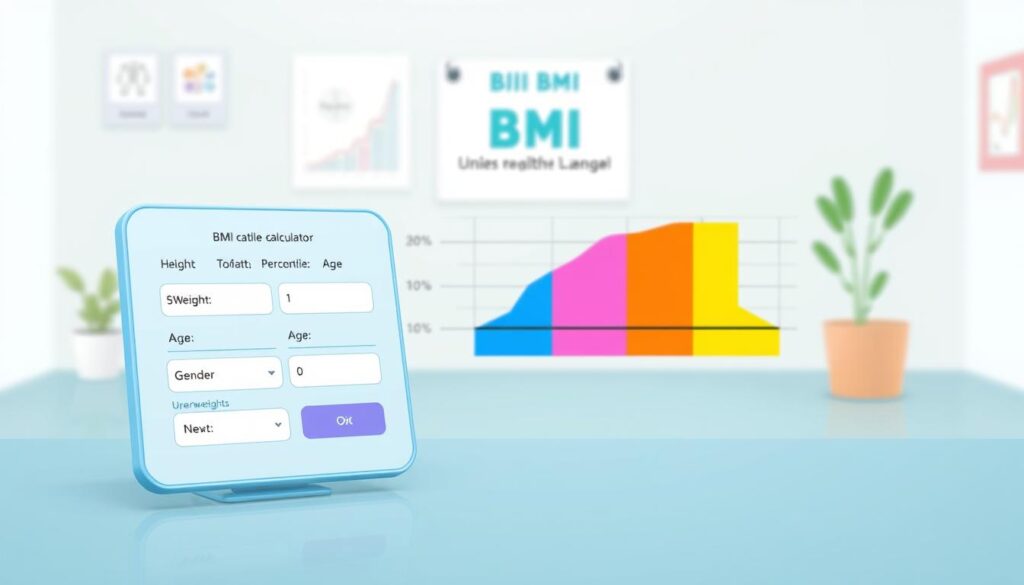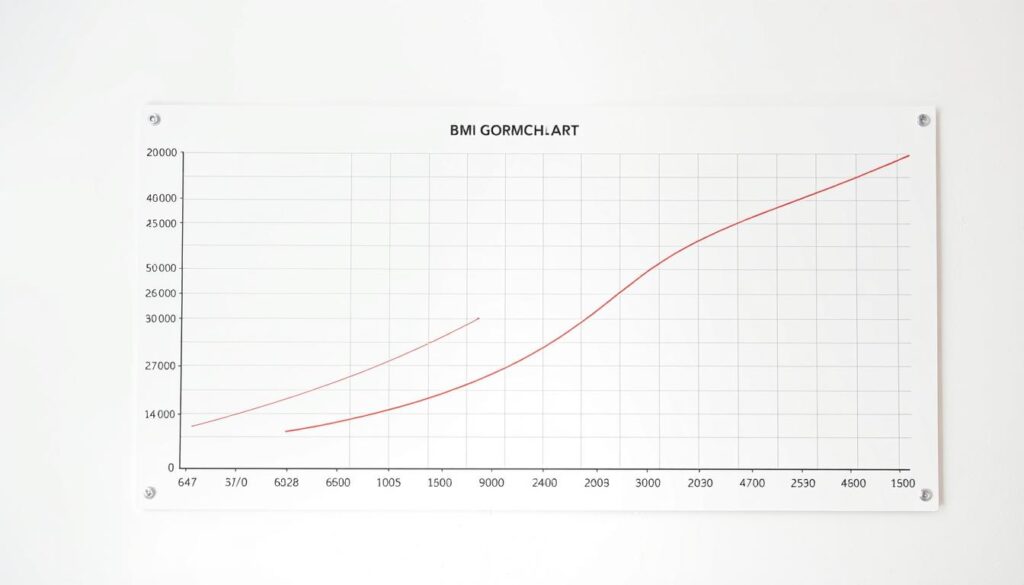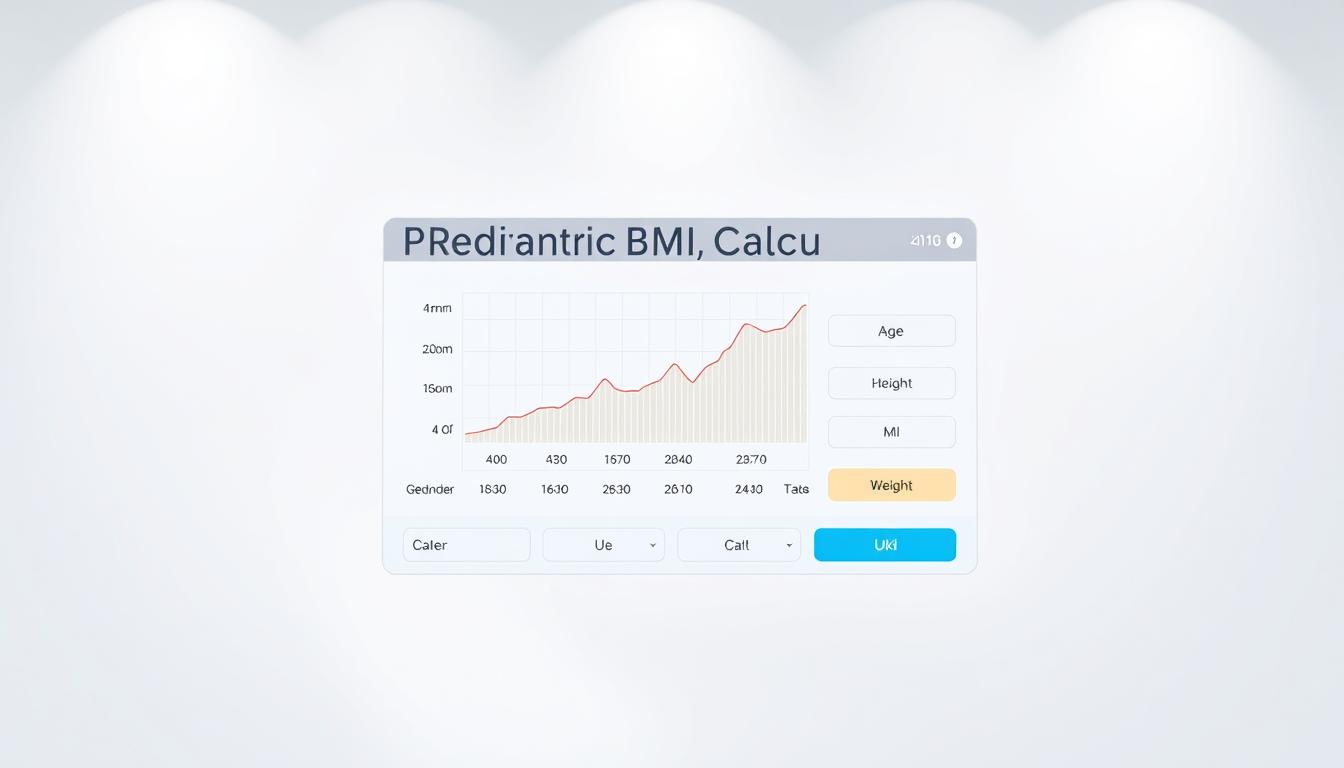Are you worried about your child’s weight and how it affects their health? It’s hard to know if their weight is healthy. But, it’s key to their well-being.
We use a body mass index calculator to check weight status. It looks at age, sex, and height. The Centers for Disease Control and Prevention (CDC) has a Child and Teen Body Mass Index (BMI) Calculator. It works for kids and teens aged 2 through 19.
This tool is vital for checking a child’s health. It shows how their weight compares to their height, age, and sex. Parents and doctors can spot health risks early with this calculator.
Key Takeaways
- Knowing a child’s weight status is key for their health.
- A body mass index calculator checks weight status with age, sex, and height.
- The CDC’s Child and Teen BMI Calculator is a trusted way to find BMI and BMI percentile.
- This calculator helps find health risks in kids and teens.
- Checking weight status early can lead to better health outcomes.
Understanding BMI and Its Importance for Children
BMI is a key health indicator for kids. It helps spot weight-related problems early. We’ll look at what BMI is, why it matters, and how it helps check kids’ health.
What is BMI?
BMI is a simple way to check body fat using height and weight. For kids, it’s called BMI-for-age. It’s important because it changes as kids grow.
BMI is found by dividing a child’s weight in kilograms by their height in meters squared. This gives a number that shows if a child is underweight, healthy, overweight, or obese.
Why is BMI Significant for Kids?
BMI is important for kids because it warns of weight-related health problems. The American Academy of Pediatrics suggests using BMI to check for overweight and obesity in kids starting at 2 years old. This helps parents and doctors spot risks early and act fast.
Knowing a child’s BMI helps parents make good choices about food and exercise. This supports healthy growth and development.
Exploring BMI Percentiles
BMI percentiles compare a child’s BMI to others of the same age and sex. This is key to seeing if a child’s weight is healthy.

| BMI Percentile Range | Weight Status |
|---|---|
| Less than 5th percentile | Underweight |
| 5th to 84th percentile | Healthy weight |
| 85th to 94th percentile | Overweight |
| 95th percentile or greater | Obese |
Knowing BMI percentiles helps parents and caregivers watch their child’s growth. A children’s BMI chart makes it easy to see BMI changes over time. This helps spot any health issues early.
How to Use a BMI Percentile Calculator
To use a BMI percentile calculator, you need to know the steps and how to read the results. A BMI calculator for youth compares your child’s BMI to a growth chart. This gives a percentile ranking.
Step-by-Step Guide to Using the Calculator
To use a child BMI percentile calculator, follow these steps:
- Gather necessary information: You’ll need your child’s age, sex, height, and weight.
- Access a reliable calculator: The CDC’s BMI calculator for children is a trusted resource.
- Enter the required data: Input your child’s details into the calculator.
- Calculate the BMI percentile: The calculator will plot the BMI on a growth chart and provide the percentile.
Interpreting Your Results
After getting your child’s BMI percentile, it’s important to understand it. The CDC has categories for BMI percentiles:
- Underweight: Less than the 5th percentile
- Healthy weight: 5th percentile to less than the 85th percentile
- Overweight: 85th percentile to less than the 95th percentile
- Obese: 95th percentile or greater

Common Misconceptions
Many people think BMI is a diagnostic tool, but it’s actually a screening measure. It shows potential weight-related issues. Knowing this is key to understanding your child’s BMI results.
By following these steps and understanding the results, parents and caregivers can use a BMI calculator for teens or children. This helps monitor health and make informed decisions.
Factors Influencing BMI in Children
The BMI of a child is influenced by many factors. These include genetics, lifestyle, and environment. Knowing these factors helps us understand BMI better and make health decisions for kids.
Genetics and BMI
Genetics play a big role in a child’s BMI. Kids with obese parents are more likely to be obese. Genetic predispositions can affect body composition and metabolism, influencing a child’s weight status. For example, some genetic conditions can make it hard for kids to feel full or satisfied.
Studies show genetics can account for up to 40% of BMI variation in kids. This shows why family history is important when looking at a child’s BMI.
Lifestyle Factors
Lifestyle choices, like diet and exercise, greatly affect a child’s BMI. A diet full of processed foods and sugars, along with little exercise, can lead to weight gain and obesity. On the other hand, eating healthy foods and staying active can help keep a healthy BMI.
| Lifestyle Factor | Impact on BMI |
|---|---|
| Diet High in Processed Foods | Increased Risk of Obesity |
| Regular Physical Activity | Helps Maintain Healthy BMI |
| Sedentary Lifestyle | Contributes to Weight Gain |
Environmental Influences
Environmental factors, like socioeconomic status and access to healthy food and spaces, also impact BMI. Children from lower socioeconomic backgrounds may have limited access to healthy food options and safe spaces for physical activity, increasing their risk of obesity.
For more information on determining your child’s BMI and understanding the implications, you can use our BMI calculator to get instant results.

Health Implications of BMI Percentiles
BMI percentiles for kids are more than just numbers; they have significant health implications that parents should be aware of.
Understanding these implications is crucial because a child’s BMI percentile can indicate their risk for various health issues. Children with a BMI percentile that falls into the underweight, overweight, or obese categories are at a higher risk for both physical and mental health conditions.
Understanding Underweight, Healthy Weight, Overweight, and Obesity
The BMI percentile categories help in identifying whether a child is underweight, at a healthy weight, overweight, or obese. Each category has its own set of health implications.
- Underweight: Children who are underweight may have a higher risk of nutritional deficiencies, weakened immune systems, and other health issues.
- Healthy Weight: Children within the healthy weight range are generally at a lower risk for health problems associated with weight.
- Overweight: Being overweight increases the risk of developing conditions like high blood pressure, high cholesterol, and type 2 diabetes.
- Obese: Obesity is associated with a higher risk of severe health conditions, including anxiety, depression, and chronic diseases.
Long-term Health Risks
Children with obesity are at a higher risk for long-term health issues, including cardiovascular diseases, certain types of cancer, and mental health disorders. According to the CDC, children with severe obesity are more likely to have obesity or severe obesity in adulthood, which is associated with additional chronic health conditions.
| Health Risk | Children | Adults |
|---|---|---|
| Type 2 Diabetes | Higher risk with obesity | Increased risk with continued obesity |
| High Blood Pressure | Associated with overweight and obesity | Contributes to cardiovascular disease |
| Mental Health Issues | Linked to obesity and low self-esteem | Can persist into adulthood if not addressed |
The Importance of Regular Monitoring
Regular monitoring of a child’s BMI percentile is crucial for early detection of potential health risks. By tracking changes in BMI percentiles over time, parents and healthcare providers can identify trends and intervene early to prevent or manage health issues.
Early intervention can include lifestyle changes such as dietary adjustments and increased physical activity. For some children, professional guidance from a healthcare provider or a registered dietitian may be necessary to develop a personalized plan.
Resources for Parents and Caregivers
Understanding childhood growth and development is key. Parents and caregivers need the right tools to support their child’s health. Several resources can offer valuable guidance.
Monitoring Tools
Using a BMI calculator for kids or a pediatric BMI calculator helps track growth. The Centers for Disease Control and Prevention (CDC) provides growth charts. These can be used with a child BMI percentile calculator to understand BMI percentiles.
Professional Guidance
Pediatricians and healthcare professionals offer personalized advice. They can interpret BMI data and give tailored recommendations. This helps meet a child’s specific needs.
Educational Materials
Teaching healthy habits early is crucial. Resources on healthy eating and physical activity empower families. By using these resources, parents and caregivers can support their child’s well-being.


